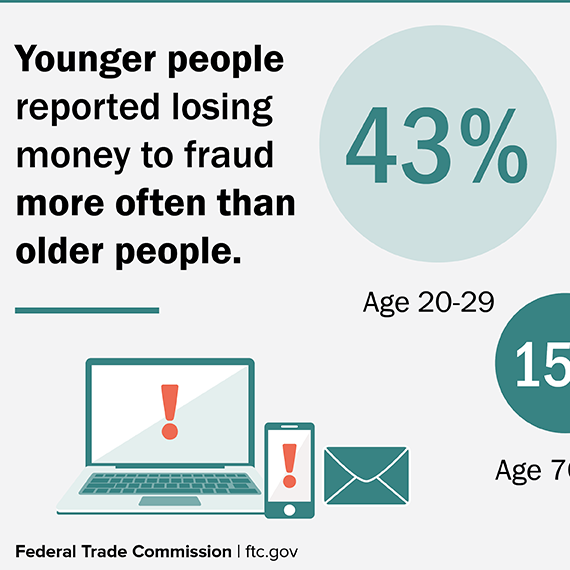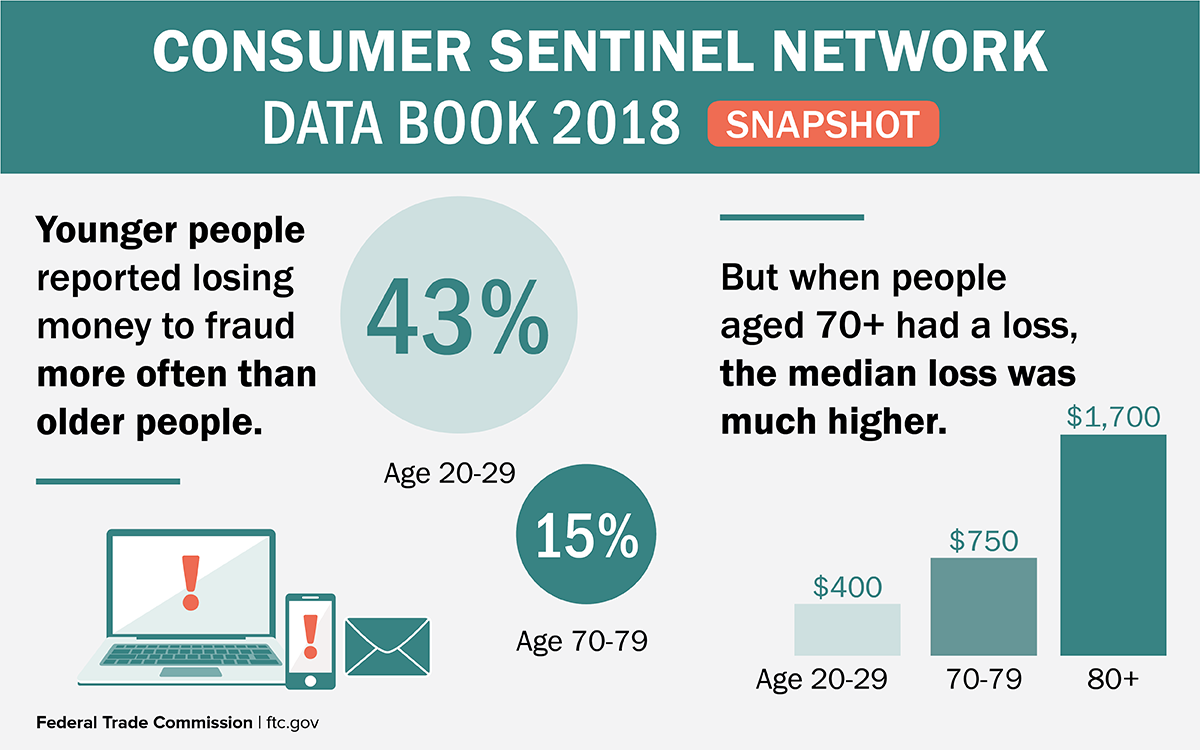
Every year, millions of people tell us about the frauds they spotted. Last year, the FTC heard from 3 million of you, and here’s some of what they learned from your reports:
- The FTC collected more than 1.4 million fraud reports, and people said they lost money to the fraud in 25% of those reports. People reported losing $1.48 billion (with a ‘b’) to fraud last year – an increase of 38% over 2017.
-
The top reports in 2018 were: imposter scams, debt collection, and identity theft.
-
Younger people reported losing money to fraud more often than older people. Let that sink in. It’s what the data have been telling us for a while, but it’s hard for people to grasp. Last year, of those people who reported fraud and their age, 43% of people in their 20s reported a loss to that fraud, while only 15% of people in their 70s did.
- When people in their 70s did lose money, the amount tended to be higher: their median loss was $751, compared to $400 for people in their 20s.
-
Scammers like to get money by wire transfer – for a total of $423 million last year. That was the most of any payment method reported, but we also saw a surge of payments with gift and reload cards – a 95% increase in dollars paid to scammers last year.
- Tax-related identity theft was down last year (by 38%), but credit card fraud on new accounts was up 24%. In fact, misusing someone’s information to open a new credit card account was reported more often than other forms of identity theft in 2018.
- The top 3 states for fraud and other reports (per 100K population) are Florida, Georgia, and Nevada. The top 3 states for identity theft reports (also per 100K) are Georgia, Nevada, and California.
Check out the numbers yourself, and see what happened the most in your own state. Meanwhile, keep reporting to the FTC at ftc.gov/complaint. They use those reports to investigate and bring cases – and so do their thousands of law enforcement partners.

